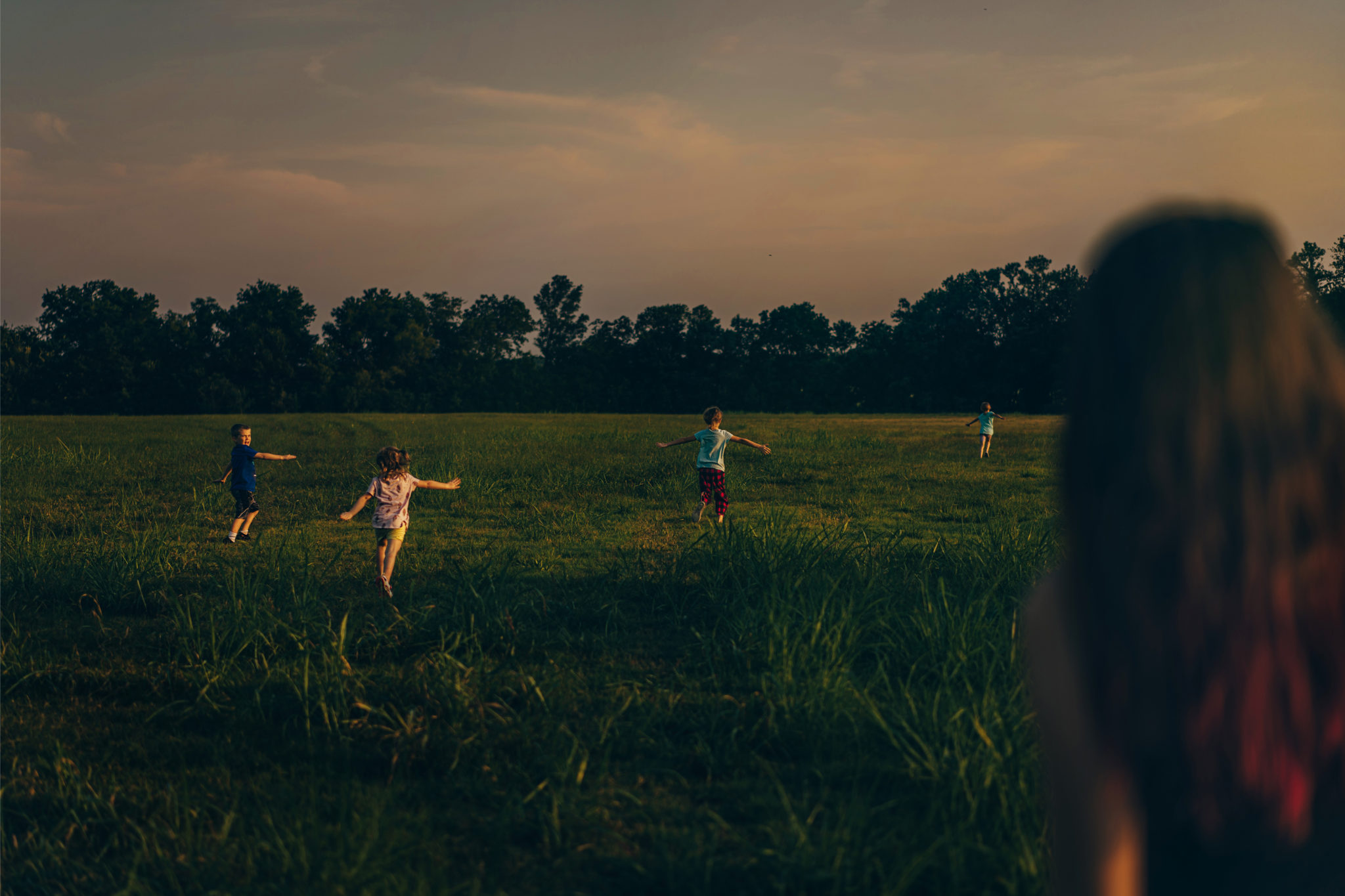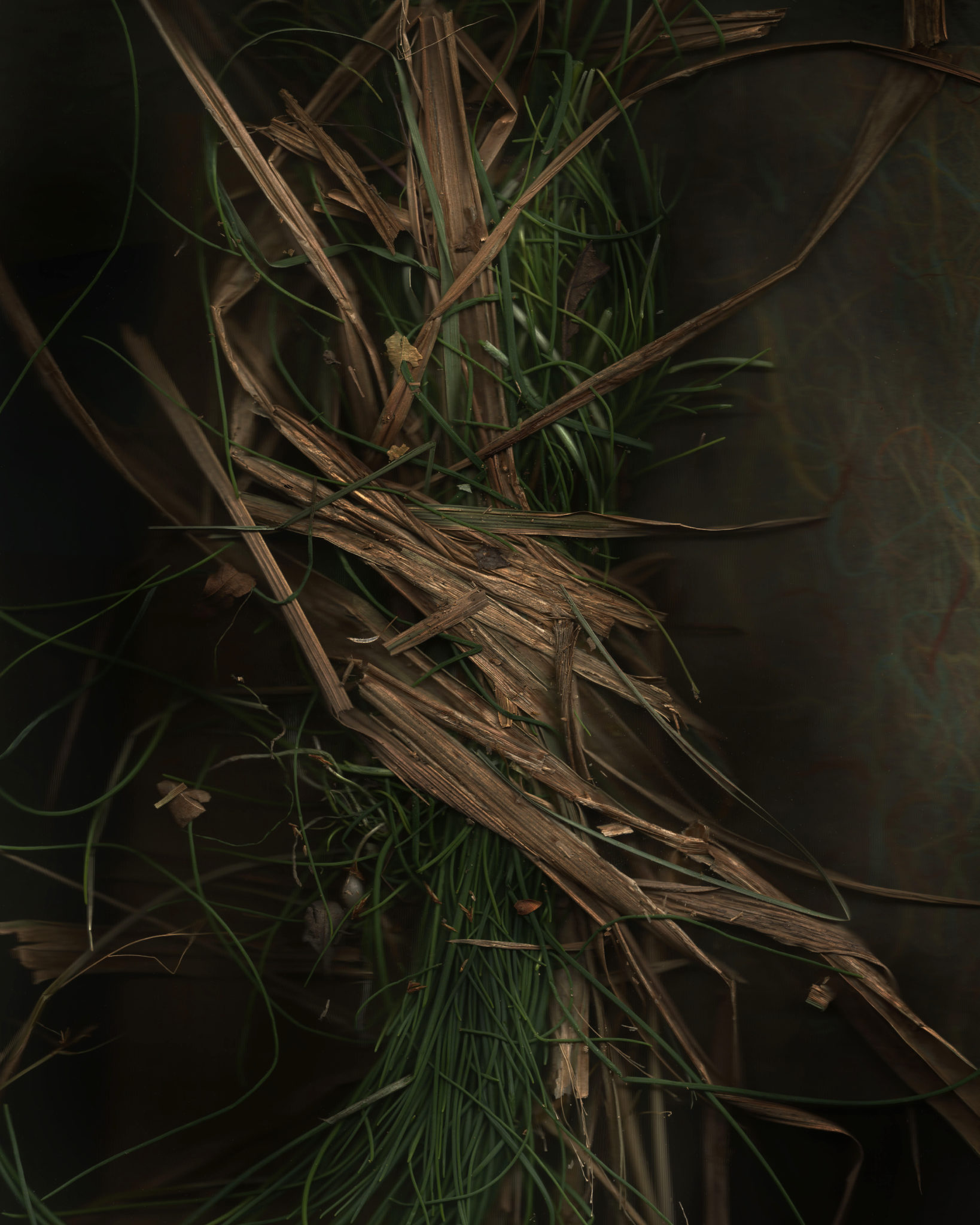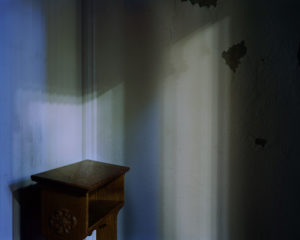IN 2019, I WAS MOURNING THE LOSS of my relationship with my sister. The last time we had been in the same room was Christmas of 2016 in our childhood home, along with five other adults and ten children. I’ve always loved the sweet babble of a full house, but the silence that followed felt deafening. For years I tried to push the sense of loss down. I didn’t know how to mend our issues, but I knew eventually they would need to come to light. Since much of our growing up together involved creative collaboration, I thought that if we could find a way to reconnect through art, she would be open to it.
After years of miscommunication and tension, our connection finally unraveled. She had moved to Oklahoma to get remarried, and I was in New York. She was taking care of nine children and a husband who was ill; I had gotten engaged and was starting a new life chapter. She worked as a flower and tea farmer in a small rural town; I was freelancing as an artist in Brooklyn. Broken trust, secrets, and anxiety snapped the last strands holding us together, and we let two years pass without talking.

Julia Hembree Smith. Night Knots, 2020. Pigment print. 10 x 8 inches.
I was twelve when my sister had her first child. I remember her crying in the kitchen when she told my parents, just a few months after she and her husband came back from their honeymoon. For ten years I watched her love her first husband, who was emotionally—and, I learned later, physically—abusive, because divorce felt impossible to her. I watched her wrestle with questions: if she divorced, would she regret it? was it against Scripture? how would she live under the label of divorce? I watched her finally leave him and move back to our parents’ house with their six children. I remember her reciting the phrase “He won’t give you more than you can handle”—and I heard it over and over in my own mind. Did she really believe it, I wondered? Did I believe it myself?
In the 1980s, around the time my sister was born, a Christian movement called Quiverfull started to gain momentum in the Midwest and South. Named for a passage in Psalm 127, it encourages having as many children as God allows: “Happy is the man that hath his quiver full of them: they shall not be ashamed.” Two decades later, my sister joined a parachurch organization that subscribed to the movement. They were anti-contraception and anti-vaccine. She went from pants to skirts, grew out her hair, began homeschooling her children, and recast herself as a homemaker and caregiver above all. Her husband, meanwhile, remained just the same. He kept his day job, his uniform of jeans and sarcastic T-shirts, and his routine of playing video games in the evenings while my sister made dinner.

Julia Hembree Smith. Pink, 2019. Pigment print. 10 x 8 inches.
I always wanted to be like my older sister, the one who put a camera in my hand for the first time and inspired my creativity. Charming as her life looked from afar and on short visits, there was a lot I didn’t see. As we got older and the children multiplied, the facade started to crack. Her marriage ended, and she chose a man in Oklahoma, where she envisioned a quaint white house, a garden, and a husband who would be present for her kids. She was in survival mode, trying to live a quiet life, making decisions for her own and her children’s well-being. During those years, she faded away from our family.

Julia Hembree Smith. Sunset at the Farm, 2019. Pigment print. 10 x 8 inches.
In August of 2019, I visited her with my camera. As I captured her flower farm, where the cosmos grew so high they hid the house, I began to imagine that our lives might become intertwined again. It wasn’t the rekindling of common interests that would mend the rift, I realized, but rather sharing our moments of darkness. One muggy afternoon, waiting to pick up her kids from daycare, we sat in her van while rain pelted the windshield, and we cried together over how hard it is to know what is right and wrong. How heartbreaking it is to feel like God doesn’t understand the weight of being a mother in poverty or being alone. How do you endure these realities and still believe?

Julia Hembree Smith. Magnified, 2019. Pigment print. 8 x 10 inches.

Julia Hembree Smith. Sweep, 2020. Pigment print. 24 x 36 inches.
We never found a solution or a perfect way to move forward, but as we sat in the van the tension of the past two years shifted. When I remember that moment, I often think of Naomi and Ruth clinging to each other in their pain, surrendering to a past and future they could not know, bereft but together. When I left the farm, I left pieces of myself there: stories and toys for the kids, photos I took for my sister’s business, and french braids in all the girls’ hair. And I brought pieces of her home with me: flowers, seeds, dried tea.
The heaviness of the questions I was trying to answer demanded a slower pace than photography alone could give me. I began sewing plant material from the farm into prints, and when I put the results in my scanner bed, I discovered that they became illuminated in unique ways, transformed into cosmic-looking abstractions.

Julia Hembree Smith. Seed, 2019. Pigment print. 8 x 10 inches.
While cameras capture what photographers see before them, scanner images are made in darkness. Working blind, I press plants between the glass panels. My materials shift as I close the scanner lid and work by touch, guiding them into their final form. Like an earthworm blindly eating its way through the soil, making the land fruitful, I participate and surrender simultaneously. In a living plant, form exists for function—catching water, absorbing sunlight—and thereby leaves room for growth. The pressure of the scanner lid gives decaying matter a new form, filling it with light, giving it another life. My working process is like a farmer’s tilling of the earth: slow, watchful, and hopeful.

Julia Hembree Smith. Crossed (detail), 2019. Pigment print. 10 x 8 inches.
At dusk on my last night in Oklahoma, my sister, seven of her kids, and I get in the van and drive to the other side of the farm, where woods run up against the fields, to visit my nieces’ fairy home, a stump with a large hole that they have decorated with flowers. When we get there, all the flowers are gone, the stump lifeless. One of my nieces starts to cry. “They hated it!”
My sister tries to spark their excitement again. The fairies must have taken the decorations to their underground homes for the winter, she tells them. We adorn the stump with new flowers and gifts. It isn’t so different from decorating a tombstone. When we are finished, we drive home as night falls across the fields, hoping that what we have given is enough.
Julia Hembree Smith received her BA in photography and design in West Tennessee in 2014 and moved to Brooklyn shortly after. She has worked with clients such as CNN, PBS, and Brooklyn Academy of Music and has just completed her first self-published photo book, Nature | Nurture.








